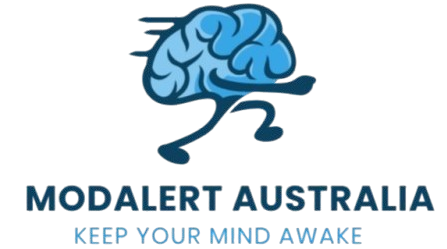How to Reset your Sleep Cycle in One Night?

How to reset your sleep cycle in one night – In today’s hectic world, sleeping often gets the back seat to social obligations, work, and screen time. However, suppose your sleeping cycle becomes disrupted due to fatigue, jet lag, or bad sleeping habits. In that case, the results can hurt the quality of your life, work, and overall well-being. While it typically takes several days to adjust your circadian rhythm fully, there are scientifically backed methods to reset your sleep cycle in just one night.
This comprehensive guide will walk you through everything you need to know about quickly changing your sleeping pattern. And includes:
- The science behind sleep cycles and circadian rhythms
- Precise steps to reset your sleep in one night
- Supplemental techniques for enhanced results
- Common mistakes to avoid
- Maintenance strategies for long-term sleep health
You can know about My Husband Sleeps All The Time What Is Wrong?
Understanding Your Sleep Cycle
To set your sleeping cycle, you must comprehend the nature of sleep and the process it follows.
What is the Circadian Rhythm?
Your circadian rhythm acts as your body’s internal 24-hour clock, which regulates your levels of alertness and sleepiness by reacting to changes in light that occur in the environment. The suprachiasmatic nuclear nucleus (SCN) controls the rhythm within the hypothalamus. It responds to light signals through your eyes.
The Sleep-Wake Cycle
A regular sleep cycle is comprised of four steps that occur every 90 to 120 minutes:
- NREM Stage 1: A light sleep (5-10 minutes)
- NREM Stage 2: Temperature drops and heart rate decreases (10-25 minutes)
- NREM Stage 3: It isn’t easy to get up to (20-40 minutes)
- REM sleep: When you dream, your brain activity rises (10-60 minutes)
The complete sleep cycle is comprised of the following cycles. A disruption can result in sleeping deprivation and a circadian imbalance.
Can You Reset Your Sleep Cycle in One Night?
Although completely changing the circadian rhythm usually requires a few days, it is possible to change your circadian rhythm within a single evening with the help of a few of the most essential biological elements:
- Light exposure
- Production of Melatonin
- Temperature of the body
- Consumption of food
- Physical exercise
The following protocol blends all these components into a complex one-night reset plan.
The One-Night Sleep Reset Protocol
Pre-Reset Preparation (Day Before)
Wake Up at Your Target Time
Make your alarm set for the exact time you would like to stay awake all day, regardless of whether you had a sleepless night before. It starts the process of changing the internal clock.
Maximize Morning Light Exposure
In the first 30 minutes after waking, you should have at minimum 30 minutes of intense lighting exposure
- Wear sunglasses when you go outside (sunlight can be 10,000+ Lux as opposed to 500 Lux indoors)
- If there isn’t any sunlight, you can use a 10,000 lux light therapy box
Exercise Early
Get a minimum of 30 minutes of intense exercise in the morning. This will help you maintain your ideal morning routine through:
- An increase in alertness to the sun
- Promoting deeper sleep at night
- The body’s temperature should be raised to ensure the best fall in the future
Strategic Caffeine Use
Drink your caffeine before noon:
- 100 to 200mg (1-2 cups of coffee) when you wake up
- Do not drink any caffeine after noon to ensure that it doesn’t interfere with sleeping
Daytime Fasting Protocol
Eat according to this schedule of eating:
- The last meal is served by 2 pm (early after lunch)
- Fast from the time of bedtime until your target (water only)
- This is similar to natural circadian rhythms and improves sleep-wake cycles.
The Reset Night Protocol
Light Control Starting at Sunset
The first 2-3 hours preceding the time you want to go to bed:
- All household lights must be dimmed
- Install blue light filters to devices (f.lux or Night Shift)
- Wear amber blue-blocking glasses if using screens
- Keep the environment as dark as possible
Temperature Manipulation
90 minutes before bed:
- Relax in a hot tub (104°F/40°C) between 20 and 30 minutes.
- The rapid cooling down that follows is a natural temperature drop before sleep.
Melatonin Supplementation
60 minutes before the time you want to go to bed:
- You should take 0.5-1mg rapid-release melanin
- It signals which indicates that “night” has arrived
Sleep Environment Optimization
Get your bedroom set:
- Temperature: 65°F (18.3°C)
- Complete darkness (blackout curtains, eye mask)
- A white noise machine is available if required.
- A comfortable and supportive mattress, as well as pillows
Controlled Sleep Deprivation
If you’re usually tired, permit yourself to sleep only the maximum amount (e.g., 7.5 hours) to increase your sleep quality the following night.
Critical Morning after Protocol
Strict Wake Time Enforcement
Get up at your desired time, regardless of your sleep time. Use:
- Multiple loud alarms
- Sunrise alarm clock
- Accountability (have somebody call you)
Immediate Light Exposure
Within 5 minutes of awakening:
- 30 minutes of illumination (outside in the event of feasibility)
- If light from nature is not available, you can use devices for therapy using light.
Physical Activity
Participate in 20-30 minutes of training to help reinforce your New wake-up time:
- Walking at a fast pace
- Jumping jacks
- Yoga sun salutations
Scientific Mechanisms behind the Protocol
This method works by altering the main factors that drive circadian biology:
Light Exposure Control
Light is the most potent source of a zeitgeber (time signal) to set your body’s circadian rhythm. The morning light boosts your clock (makes you wake up earlier), while the night light slows it (makes it harder to sleep).
Melatonin Timing
Melatonin is your human body’s “darkness hormone.” When taken at the correct time, pharmacologically, it signifies that night has arrived and that avoiding light can prevent the reduction.
Temperature Regulation
The body’s temperature naturally falls by 1-2°F during the night. Hot baths create a cooling system that causes sleep through thermoregulation mechanisms.
Food Timing
Fasting during the day creates metabolic signals in sync with the circadian rhythms. Consuming food late can disrupt the circadian rhythms, while eating earlier increases them.
Sleep Pressure Management
Controlled sleep deprivation builds adenosine (sleep pressure) to prevent excessive sleep inertia, which could disrupt the newly established routine.
Know about Why Do I Keep Falling Asleep When I Sit Down?
Supplemental Techniques for Enhanced Results
To make resetting even more effective, you can consider adding these research-based strategies:
Camping Method
Enjoy the day and night outdoors in the dark, without artificial light. Natural light-dark cycles could quickly restore cycles of the circadian clock.
Chromotherapy
Make use of colored light sources at specified timings:
- Light blue (480nm) early in the morning
- Lights of red and amber in the evening
Breathing Techniques
The breathing pattern is 4-7-8 before going to bed:
- Inhale 4 seconds
- Sit for 7 seconds
- Inhale for 8 seconds
- Repeat the cycle 4 times
Progressive Muscle Relaxation
The goal is to relax and release the muscles to create mental calmness.
Common Mistakes That Prevent Successful Resets
Stay clear of the pitfalls that could interfere with sleep cycle adjustment:
- Inconsistent Wake Times – One night of sleeping could reverse the progress made
- Evening Screen Use – The blue light blocks melatonin over long periods
- Late Caffeine – Even afternoon coffee can disrupt sleep architecture
- Alcohol Before Bed – When you are sedating, it can disrupt the quality of your sleep.
- Overeating at Night – Sleep processes are influenced by digestion
- Napping – It reduces pressure on the sleeper, allowing them to sleep at night
- Over-reliance on Sleep Aids – It can cause dependency and even grogginess
You can also read: Why Do I Fall Asleep When I Sit Down in the Evening?
Maintenance: Keeping Your Reset Sleep Cycle
Following your reset for one night, follow these guidelines to ensure you’re sticking to your new schedule:
- Fixed Wake Time – Keep the same wake time daily (±30 minutes), even on weekends
- Morning Light Routine – 30 minutes in the initial one hour following the moment of waking
- Evening Wind-Down – Start dimming lights 2 hours before bed
- Consistent Meal Times – Eat meals at the exact times each day to help maintain rhythms
- Weekly Sleep Debt Payback – If you’re sleep-deprived, increase the time by 30-60 minutes every night to ensure you’re fully rested
When to Seek Professional Help
See a sleep expert for:
- Sometimes, you can’t get a good night’s sleep even with the best hygiene practices.
- Experience excessive daytime sleepiness
- Are you experiencing signs of sleep Apnea (snoring and gasping)
- Suspect a circadian rhythm disorder
Medical options may include:
- Prescription melatonin agonists
- Therapy with timed light
- Cognitive Behavioral Therapy for Insomnia (CBT-I)
Conclusion
Resetting your sleeping cycle just one night is a multi-pronged strategy that simultaneously alters the temperature, light hormones, behavior, and light. Though it isn’t easy, this procedure can result in significant changes in the right way. Remember that keeping your routine requires constant wake time and light exposure control. Suppose you can understand and work to your body’s natural biological clock rather than against it. In that case, you will be able to achieve better, more restful sleep and all the cognitive, physical, and emotional benefits it offers.





